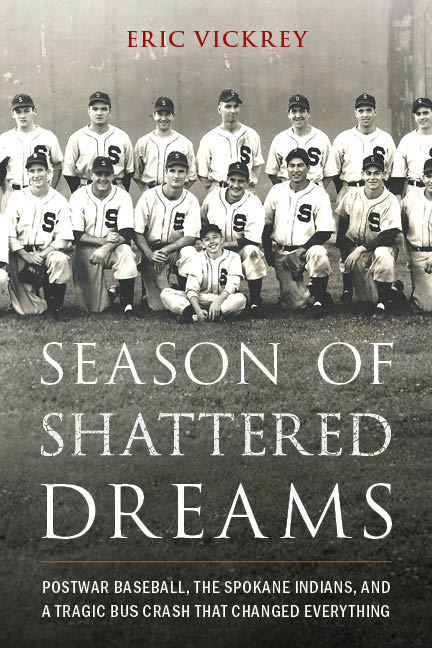
Bob Paterson: Potential Unfulfilled
The biting cold air chilled the bones of the dozens of ballplayers who gathered for Oakland Oaks spring training in Boyes Springs, California, in early March of 1946. Oaks camp was bursting at the seams with players returning to pro ball following World War II. Among them was a strapping young outfielder named Bob Paterson. The 21-year-old San Franciscan stood a shade under six-feet-four and tipped the scales at 200 pounds. He possessed a combination of power and speed. An Oakland Tribune scribe noted that Paterson, of Scotch-Irish descent, bore a resemblance to Lou Gehrig.

On March 4, 1946, the Oaks played an exhibition game against Hugh Luby’s All-Stars, a collection of former major leaguers piloted by Luby—an erstwhile New York Giants infielder. In the sixth inning, the Oaks’ new manager, Casey Stengel, inserted Paterson to play left field. The youngster proceeded to triple in the 10th inning, double in the 12th, and single home the winning run in the 15th. His performance impressed both Stengel and New York Yankees scout Joe Devine. “There’s a boy who has plenty of what it takes,” said Devine. “He should go places in baseball … I’m interested in him.”
Paterson had already proven himself a capable professional hitter. Four years earlier, he signed with the Oaks out of high school and led the Class-C Idaho Falls Russets with a .316 average. He served in the Coast Guard during the war, further polishing his skills playing in a Bay Area service league. Paterson had big-league dreams and the talent to make them come true.
With veteran players like Les Scarsella, Wally Westlake, and Hersh Martin on the Oaks roster, Stengel had neither the roster space nor playing time for youngsters like Paterson and fellow San Franciscan Vic Picetti. Stengel farmed both players out to the Class-B Spokane Indians of the Western International League for more seasoning.
With Spokane, Paterson flashed the same big-league potential that caught the eye of Devine during spring training. Through the Indians’ first 54 games, Paterson hit .317 with three home runs, 30 runs batted in, and 15 stolen bases. He was on his way up to the Pacific Coast League. Possibly the major leagues. But then tragedy struck.

On June 24, 1946, the Spokane Indians‘ team bus veered off the road near Snoqualmie Pass in the Cascade mountains, tumbling 300 feet down a rocky ravine. Nine of the 15 players on board died from injuries sustained from the accident, including Paterson. We’ll never know how good he could have been or how far he would have gone in pro baseball. Bob Paterson is a footnote in baseball history. Long gone but not entirely forgotten.
You can read more about Paterson and the 1946 Spokane Indians in my book, Season of Shattered Dreams.
